As the importance of social media and online PR continues to rise in particular the debate between earned vs paid media, marketers are adapting their methods of budgeting, reporting, and investing in media to reach and engage their customers. Investment in media is typically grouped into three media ‘buckets’ earned, shared, and paid, each of which presents opportunities to influence customers. However, what’s new is the increasing prominence given to owned and earned media, which are becoming more popular compared to paid media, which has always dominated in the past. Therefore it’s important to establish the difference between Earned vs Paid media when it comes to your business.
This shift in focus is positive as it forces businesses to rethink how they measure the returns from social media and set investment levels appropriately. With global inflation and marketing budget cuts, companies need to reevaluate the value of earned media, particularly within their social strategy, to meet their objectives at a lower cost per acquisition.
To optimise their earned media strategies, marketers must consider the growing number of platforms and engagement types, such as shares/repins/retweets, which increase social value and advocacy and expand reach even further. While some sectors tend to focus more on either paid, owned, or earned media, a balanced approach can work best for “always-on” media activities, while for campaign objectives, dialing up a particular media/channel can depend on your objectives.

4 Huge Differences: Earned vs Paid Media and using them in a Marketing Strategy
What is Earned vs Paid Media?
Paid media refers to media where there is an investment to pay for visitors, reach, or conversions through search, display ad networks, or affiliate marketing. Earned media is publicity generated through PR invested in targeting influencers to increase brand awareness, and customer trust through recommendations/advocacy, and conversations in social networks, blogs, and other communities. Owned media includes a company’s own websites, blogs, mobile apps, or social presence on Facebook, LinkedIn, or Twitter.
Each of the three media types offers digital marketers a plethora of approaches and channels, so it’s essential to plan goals and objectives before diving into the world of media. Moreover, setting clear digital marketing goals and objectives helps in getting buy-in from colleagues and briefing agencies better. By integrating campaigns, resources, and infrastructure throughout your multichannel marketing strategy, you can achieve overlap between paid, owned, and earned media.
Selecting media investment can be challenging, but the content distribution matrix tool can help review the paid, owned, and earned media options in terms of the value of the investment. Staying on top of media changes and anticipating them is crucial to continue cutting through the noise and reaching customers.

The following table helps to break down Earned vs Paid media.
| Earned Media | Paid Media | |
|---|---|---|
| Definition | Publicity generated through PR invested in targeting influencers to increase brand awareness, customer trust through recommendations/advocacy, and conversations in social networks, blogs, and other communities | Media where there is investment to pay for visitors, reach, or conversions through search, display ad networks, or affiliate marketing |
| Audience | Influencers and advocates, customers who trust recommendations | General audience, people who fit specific demographics |
| Cost | Low cost, investment of time or money, or both | High cost, direct investment of money |
| Credibility | High, based on unbiased, organic sharing of information and recommendations | Medium, based on the quality of content and targeting |
| Control | Little control over the message, which can be positive or negative | High control over the message, which can be tailored to specific goals |
| Goal | Build brand awareness, create buzz and conversation, and increase customer trust | Drive immediate action, reach a specific target audience, increase conversions |
| Measurement | Difficult to measure, often tracked through engagement metrics such as shares, retweets, and mentions | Easier to measure, tracked through analytics and conversion metrics such as click-through rates and conversions |
| Examples | Word-of-mouth recommendations, social media shares, online reviews | Display ads, search engine ads, sponsored content |

Using Paid-Owned Media in Your Digital Marketing Strategy
Mapping out a brand’s current use of paid-owned-earned media is a powerful technique as part of marketplace analysis for developing a marketing strategy. By focusing on the right media types and platforms, marketers can reach and engage their target audience more effectively and efficiently.
In conclusion, while none of these media types are new, digital marketers are warming up to the opportunities available for owned and earned media types alongside paid media. Planning your media activity using the diagrams/matrix can help you dial up your media mix according to your marketing plan.



